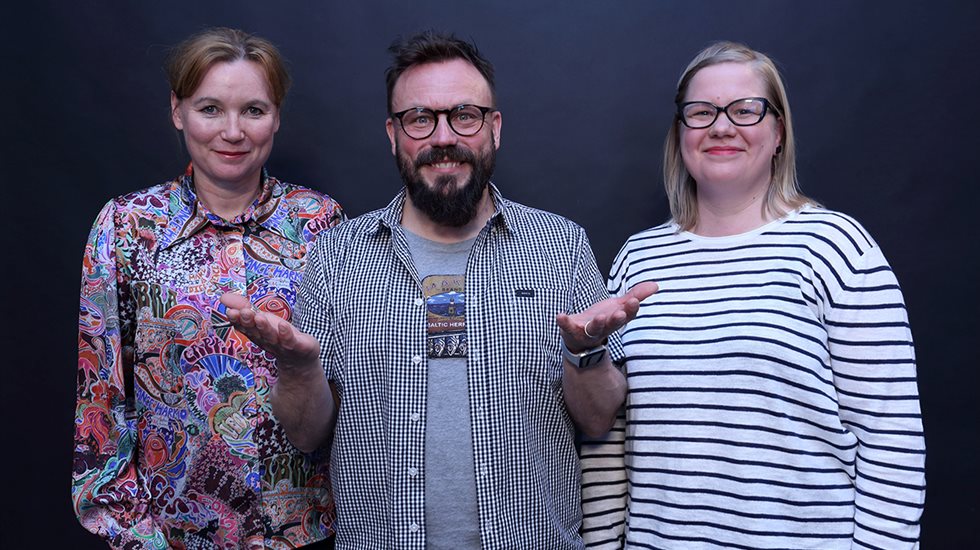In the fourth episode of Metso’s Studio Planet podcast series, Mari Pantsar, head of the carbon-neutral circular economy theme at the Finnish Innovation Fund Sitra, and Päivi Kosunen, a circular economy expert from Finnish national influencer Economy and Youth TAT, discussed the circular economy. What does the circular economy actually mean and how is it different from recycling?
“Recycling is a waste management action: you have waste and you consider what the most reasonable thing to do with it is. Meanwhile, the circular economy is a holistic planning action: before manufacturing a product, you consider which natural resources you will use, how you will recycle the product, what actions you will take to keep the product’s value as high as possible for as many users as possible, and how you will retrieve the worn out raw materials for recycling,” Kosunen explains.
“In a circular economy, we should achieve a model where economic growth is achieved by retaining the materials that society is already using. At present, only nine per cent of all of the natural resources used are retained in circulation,” Pantsar says.
In your work, you explain the new economic model to children and the youth by using the idea of wastage as an example. What does it mean?
“Sometimes, it’s difficult for us to see where and how we are being wasteful. For example, we understand that we are using fossil fuels when we drive a car, but we fail to see that resources have been used to build the car and the car is only used for eight per cent of its complete lifecycle. Or that the car can seat five people, but on average, we are only using a little over one of the seats. The rest is resources that were taken into use but are not being utilized,” Kosunen explains.
“A prime example of wastage in our society is food: one-third of the food in the food chain goes to waste. Food is also a major source of emissions. If food wastage were a country, it would be the world’s third largest emitter after China and the United States. We must achieve a more efficient economic model that eliminates wastage and loss altogether,” Pantsar says.
Will recycling and circular economy resolve the basic problem of continuously increasing production and consumption?
“Recycling will not resolve the problem. On the other hand, the problem cannot be resolved without recycling. We must switch to circular economy and think about the ultimate sources of our happiness and wellbeing. Do buying and consumption make us happy? In the 1850s, there were a billion people, in the early 20th century two billion, and now there are 7.7 billion of us. If buying and consumption are the sources of our happiness, we are in big trouble with such a huge number of people,” Pantsar ponders.
How can we guide industry towards better circular economy?
“In the EU, we have reached a situation where six times more raw materials are being imported than exported. We are highly dependent on others, and large businesses have realized the risks related to raw materials: the availability of raw materials can be meager or fluctuate. We must change our operating models to achieve as much benefits as possible from the same raw materials,” Kosunen says.
“Businesses have realized that efficient use of materials in compliance with the principles of circular economy will also induce savings. It has been calculated that the European industry can achieve net savings of EUR 1,800 billion per year, which is eight per cent of the combined net sales of all the businesses in the EU area,” Pantsar explains.
Do you have any concrete examples of how new business has already been created?
“There are plenty of good business cases, such as manufacturers of biofuels, companies that manufacture packages from recycled materials, and companies that lease computers to other companies. I believe that in future, all successful companies will either use the circular economy principle or be carbon neutral,” Pantsar says.
What kind of a planet would you like to leave for the future generations and how can we achieve this?
“I would like to be involved in creating a better Earth where natural resources are used in a more reasonable manner and biodiversity is retained,” Kosunen says.
“A world where the environment is valued more and which is based on the values of the previous generations,” Pantsar sums up.
Studio Planet is a five-part podcast series on sustainable society where Finnish experts and influencers discuss topical issues. The series aims to contribute to the discussion with consumers on how industry can be involved in sustainable development.
Read the full series:
Climate anxiety can be alleviated by becoming part of the solution
Is mining in space realistic and are asteroids a threat or a crock of gold for the world?
Climate change and consumption habits - what should we give up?

